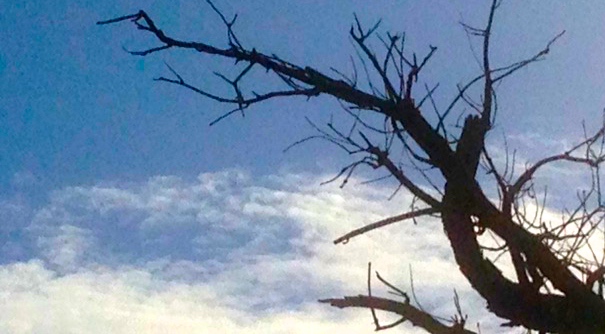
Agence France-Presse (6/11/18)
Some of Africa’s oldest and biggest baobab trees — a few dating all the way back to the ancient Greeks — have abruptly died, wholly or in part, in the past decade, researchers said Monday.
The trees, aged between 1,100 and 2,500 years and some as wide as a bus is long, may have fallen victim to climate change, the team speculated.
“We report that nine of the 13 oldest… individuals have died, or at least their oldest parts/stems have collapsed and died, over the past 12 years,” they wrote in the scientific journal Nature Plants, describing “an event of an unprecedented magnitude.”
“It is definitely shocking and dramatic to experience during our lifetime the demise of so many trees with millennial ages,” said the study’s co-author Adrian Patrut of the Babes-Bolyai University in Romania.
Further research is needed, said the team from Romania, South Africa and the United States, “to support or refute this supposition.”
Between 2005 and 2017, the researchers probed and dated “practically all known very large and potentially old” African baobabs — more than 60 individuals in all.
Collating data on girth, height, wood volume, and age, they noted the “unexpected and intriguing fact” that most of the very oldest and biggest trees died during the study period. …
(Commoner Call photo by Mark L. Taylor, 2018. Open source for non-derivative use with link to www.thecommonercall.org )
*****
From Africa’s Baobabs To America’s Pines: Our Ancient Trees Are Dying
By John Vidal
The HuffPost (6/19/18)
Old postcards show North American redwoods large enough for cars to drive through, thousand-year-old kauri trees in New Zealand with trunks the size of tanks, and European oaks older than the Roman empire with branches covering half a football field.
Some of these monumental trees are still alive, but scientists say that the world’s oldest and largest trees are dying out fast as climate change attracts new pests and diseases to forests, and settlements and new roads fragment ecosystems.
The latest of the botanical giants to succumb are some of the world’s oldest baobab trees that dominate the southern African savannah and can live to well over 2,500 years.
New research published in Nature Plants records that nine of the world’s oldest 13 baobabs and five of the six biggest ones, have partially or completely died in the last 12 years. The Romanian and South African researchers involved in the study speculate that repeated droughts, linked to climate change, may be responsible, but they want more research. …
